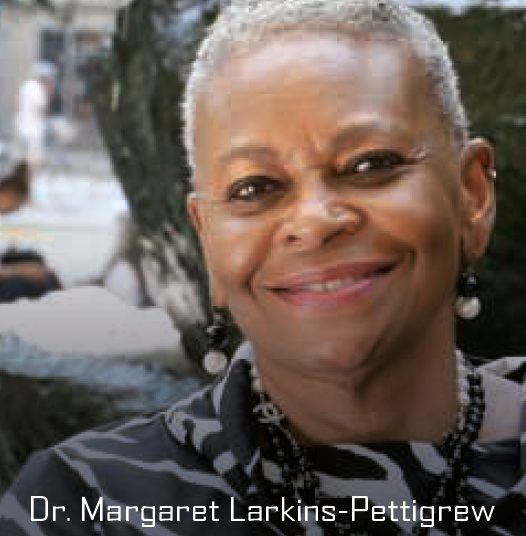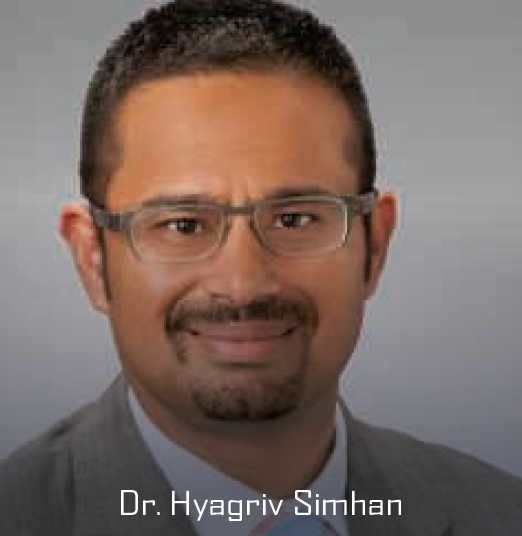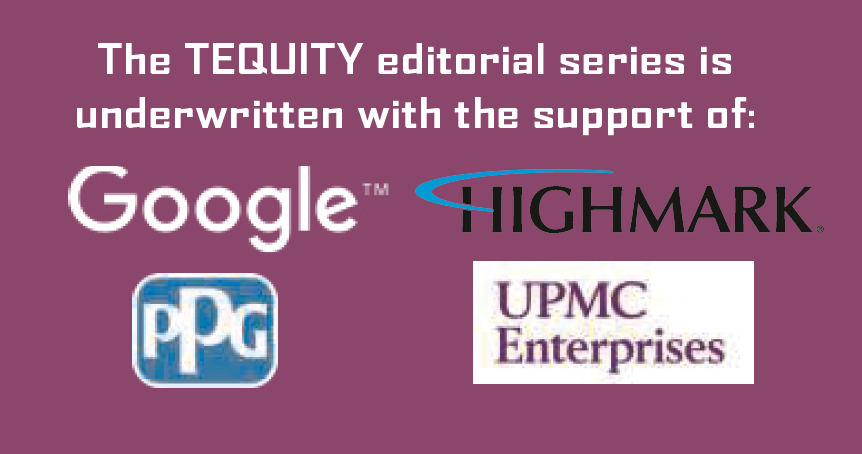IMPROVING HEALTH EQUITY IN THE PITTSBURGH REGION IS AN ECONOMIC & MORAL IMPERATIVE
By Todd Miller
Health equity is a term that means different things to different people. According to Dr. Margaret Larkins-Pettigrew, Allegheny Health Network’s (AHN’s) Chief Clinical Diversity & Inclusion Officer, the Princeton, NJ-based Robert Wood Johnson Foundation, the nation’s largest philanthropy dedicated solely to health, provides the best definition, which is “everyone has fair and just opportunity to be as healthy as possible.”
 Larkins-Pettigrew, an obstetrician-gynecologist and nurse by training, believes that the importance of health equity in growing, maintaining and expanding a strong workforce in the Pittsburgh region should be a key priority of employers across all economic sectors. “The healthier people are, the more likely they can obtain employment and become valuable contributors to their employers and to the community,” she says.
Larkins-Pettigrew, an obstetrician-gynecologist and nurse by training, believes that the importance of health equity in growing, maintaining and expanding a strong workforce in the Pittsburgh region should be a key priority of employers across all economic sectors. “The healthier people are, the more likely they can obtain employment and become valuable contributors to their employers and to the community,” she says.
As an administrator and clinician, Larkins-Pettigrew has learned that health equity has significant consequences for everyone. “When other people suffer because they are unable to access healthcare, we all suffer. We want society to be the best it can be, and if we don’t address issues of health equity, then we continue to perpetuate preventing people from engaging in a productive life.”
The ongoing pandemic has exacerbated disparities in access to healthcare among class and racial lines in western Pennsylvania, and in similar-sized regions nearby such as those anchored by the cities of Cleveland and Columbus. Larkins-Pettigrew points to the City of Pittsburgh’s Gender Equity Commission’s 2019 report titled “Pittsburgh’s Inequality Across Gender and Race” as an accurate portrayal of the challenges facing the region regarding health equity.
According to the report, co-authored by Dr. Liz Miller, a Professor of Pediatrics at the University of Pittsburgh and four professors of sociology, social work and linguistics at the university, 18 out of every 1,000 pregnancies of African American women in the region end in a fetal death, compared to only nine out of every 1,000 white pregnancies and two out of every AMLON (Asian, Multiracial, Latinx, Other and Native American) pregnancies. Thus, African American women are twice as likely to have pregnancies resulting in fetal death than are white women.
What’s more, although the report found that African American women in Pittsburgh start prenatal care earlier than African American women in similar cities and have lower rates of gestational diabetes, hypertension and infection, African American women’s maternal mortality is higher in Pittsburgh than in 97 percent of similar cities. Moreover, the inequality between white and African American maternal mortality rates in Pittsburgh is greater than the inequality between white and African American maternal mortality rates in 84 percent of similar cities.
Says Larkins-Pettigrew, “The disparities revealed in that study are alarming. As a community we must do something about them.”
She believes that reducing infant mortality rates is the best place to start because “it keeps mothers healthy and is an investment in ourselves. Every country is graded on the survival of its babies, and our country, and our region, need to do better” than about six infant deaths per 1,000 births compared to about four per 1,000 in Europe and less than two per 1,000 in Japan.
AHN’s First Steps & Beyond program seeks to decrease infant mortality by monitoring the health and well-being of babies born to African American mothers, and to women in other marginalized communities. The program provides resources to support new mothers at home with a focus on improving outcomes. Using a proven model, Allegheny General Hospital and Highmark have partnered with key stakeholders to reduce mortality of African American babies by 28 percent over the past five years.
Access to care for new mothers and their infants, as well as people of all ages, is another key to health equity that Dr. Larkins-Pettigrew believes is critical to the region’s long-term economic health. “Health care professionals and employers need to ask themselves, ‘How are we making sure that everyone has access to medical, dental and behavioral health services?’ because it is in our interest to have as many people as possible in good physical health and psychologically intact. It’s the right thing to do, and it expands the labor pool for a region that is positioned to experience significant growth.”
The Living Health Model
Besides AHN’s internal efforts to improve health equity, AHN’s parent company, Highmark Health, is partnering with Google Cloud and Verily Life Sciences to develop the Living Health Model (LHM). LHM is designed to eliminate fragmentation in healthcare by providing a patient experience that is simpler, smarter and more seamless than the current system allows.
This healthcare delivery solution will free clinicians from time-consuming administrative tasks and provide them with personalized data, real-time remote monitoring and actionable information about each patient. These real-time mechanisms foster a two-way dialogue with patients and clinicians and allow patients to be more proactively engaged in their health.
The six-year collaboration agreement centers on Google Cloud, building the interoperable platform in which LHM lives and Verily provides digitally enabled care solutions to manage chronic conditions, as well as a clinical insights platform that allow sAHN and Highmark Health to guide patients through personalized pathways to care.
To take advantage of digital technology, however, Larkins-Pettigrew points out that it is necessary to “address levels of disparity” such as lack of access to broadband services and smartphones.
“Some people can’t afford access to internet, so they have to leave their homes to seek healthcare, which can be expensive and physically difficult. There are solutions for overcoming these challenges, and they require facilitating long-term partnerships among healthcare providers, government, business and academic institutions.”
A Success Story
 To promote health equity, Dr. Hyagriv Simhan, Professor and Executive Vice Chair of Obstetrical Services at the University of Pittsburgh School of Medicine and Director of Clinical Innovation for the Women’s Health Service Line at UPMC Magee-Womens Hospital, has led efforts to develop the MyHealthy Pregnancy smartphone app with a team of researchers at UPMC, the University of Pittsburgh and Carnegie Mellon University. The app is based on a digital platform that UPMC developed four years ago.
To promote health equity, Dr. Hyagriv Simhan, Professor and Executive Vice Chair of Obstetrical Services at the University of Pittsburgh School of Medicine and Director of Clinical Innovation for the Women’s Health Service Line at UPMC Magee-Womens Hospital, has led efforts to develop the MyHealthy Pregnancy smartphone app with a team of researchers at UPMC, the University of Pittsburgh and Carnegie Mellon University. The app is based on a digital platform that UPMC developed four years ago.
“Our goal is to do what we can to narrow disparities in pregnancy care and during the post-partum period among women who have easy access to the healthcare system and those who do not,” says Simhan.
In parallel with developing the app, Simhan and his team have included as part of the treatment plan the use of doulas or professional labor assistants who provide physical and emotional support to women and their partners during pregnancy, childbirth and during the postpartum period.
To ensure that the app fully addresses users’ needs, the team conducted extensive research. Their findings revealed that women could benefit most from being reminded to take a low-dose aspirin to prevent preeclampsia, a serious and common hypertension disorder that is characterized by high blood pressure and damage to the liver, kidneys and other organs, as well as postpartum hypertension monitoring.
Although the women’s healthcare providers told them about the preventive measure, Simhan’s team learned that 37 percent of the subjects were unaware they had been advised to take the medication.
The team then modified the app to enable women to enter their blood pressure and symptoms into their phones. Those data are monitored by a nursing call center that relays information to physicians.
Since the MyHealthy Pregnancy digital platform and app have been available, more than 5,000 women have used them, and some 90 percent of those individuals report that the platform or app has helped them improve their health.
Simhan is quick to point out that the app is not a cure-all for improving health equity and that community-based resources such as Resolve Crisis Services in Allegheny County to complement technology.
Nevertheless, he believes that the app could provide a more nuanced understanding of aspirin for use for preeclampsia than there may be time for during a provider appointment.
“As we work to narrow disparities in healthcare access, we are finding that 20 percent of adverse outcomes are due to the healthcare environment and 80 percent are due to what happens to the patient outside of a healthcare setting. Therefore, we need to pay more attention to the patient’s life circumstances, instead thinking of the patient as a set of symptoms.”
What Tech Council Members Can Do
 As Larkins-Pettigrew sees it, the Pittsburgh Technology Council and its individual members “have a great presence in the community” given their access to the corridors of power and ability to work with leaders in the business, government, academic and not-for-profit sectors to develop and implement solutions to many of the region’s challenges, including health equity.
As Larkins-Pettigrew sees it, the Pittsburgh Technology Council and its individual members “have a great presence in the community” given their access to the corridors of power and ability to work with leaders in the business, government, academic and not-for-profit sectors to develop and implement solutions to many of the region’s challenges, including health equity.
She encourages the Council and its member companies alike to “build collaborations that bring people together and educate ourselves about healthcare disparities and their implications.”
By making sure that people understand what is happening on the healthcare front throughout the region, Larkins-Pettigrew believes that such efforts can bring people together to “make things better for everyone.” She acknowledges that it is sometimes difficult to connect with culturally diverse communities, but that doing so can benefit everyone.
In that vein, Larkins-Pettigrew quotes Booker T. Washington, an educator, orator and presidential advisor in the late 19th and early 20th centuries. In his Atlanta Compromise speech in 1895 to an audience of African Americans and whites, he encouraged African Americans in the Deep South to “cast down your buckets where you are,” meaning that people need to make the best of their situations and work together instead of running away from challenges.
When it comes to achieving health equity in the Pittsburgh region, that means collaborating in meaningful and measurable ways to help the most vulnerable among us become better able to achieve and maintain good health throughout their lives.